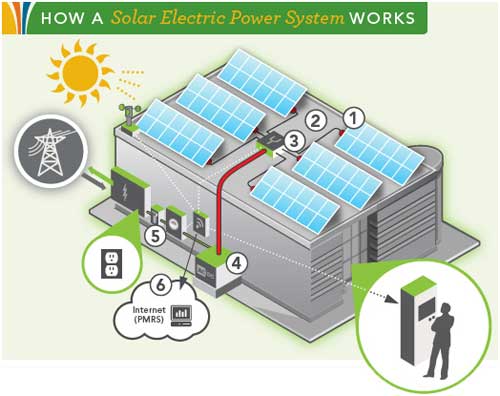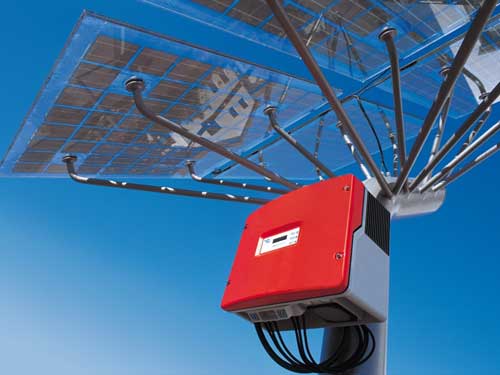
Solar as Today’s most promising alternative energy found abundantly and have lot of benefits. Solar power is generated when this energy is collected and converted into usable electricity. Solar power systems are often referred to as PV or photovoltaic systems and generally consist of three main components solar panels, an inverter and a metering system. Other system components include electrical wiring, protection devices and switches, mounting frames for the panels and monitoring systems.
Solar as Today’s most promising alternative energy found abundantly and have lot of benefits. Solar power is generated when this energy is collected and converted into usable electricity. Solar power systems are often referred to as PV or photovoltaic systems and generally consist of three main components solar panels, an inverter and a metering system. Other system components include electrical wiring, protection devices and switches, mounting frames for the panels and monitoring systems.
Solar power systems (photovoltaics) are sometimes confused with solar hot water systems, which use solar energy to heat water rather than produce electricity.
How Solar Panel Works?
A solar panel works by allowing photons, or particles of light, to knock electrons free from atoms, generating a flow of electricity. Solar panels actually comprise many, smaller units called photovoltaic cells. (Photovoltaic simply means they convert sunlight into electricity.) Many cells linked together make up a solar panel.

Each photovoltaic cell is basically a sandwich made up of two slices of semi-conducting material, usually silicon — the same stuff used in microelectronics.
Most solar power systems use PV modules (or panels) installed on a rooftop to create electricity from sunlight. There are different types of PV modules, but most consist of a collection of solar cells made of thin wafers of silicon. When light falls on the cells an electric current is produced.
Most homes or commercial buildings will need around 12 to 15 square metres of unshaded, north-facing roof space to mount the modules for a 1.5kW solar system. Ideally, for the Sydney area, the modules should be tilted towards the sun at around 30 degrees to maximise the solar collection. If the roof’s slope is not at the right pitch, a good designer can create a special mounting frame for the modules. Cloud cover and shading can dramatically reduce a solar power.
Solar Power is reliable and cost-effective power solution and requires little maintenance
- To describe Solar Power System is complete, fully integrated solar power supplies designed for site requiring loads of 12, 24 or 48 volts DC.
- Each solar power system provides safe and reliable power generation without the need and expense of installing utility power.
- The sealed, maintenance free batteries are designed for deep cycle operation and extended life in solar applications.
- The aluminum array support structures and battery enclosures are strong yet lightweight and corrosion resistant for harsh marine or severe weather locations.
- Solar power system is the one which can be conveniently installed and transported.
- It also has the perfect characteristics of self-control, self-protection, needing no attention, compact structure, elegant outline and convenience for using etc.
Soar Power Inverters
What is an Solar Inverter? A solar power inverter converts the direct current (DC) electricity generated by solar panels into alternating current (AC), the form of electricity conventionally used in homes and businesses. The inverter can be placed inside or outside your home, but should be well ventilated and protected from the elements.

Most inverters have indicator lights to show whether the system is producing electricity and a simple electronic display that shows how much solar electricity has been generated. Some inverters may have additional monitoring features such as wireless in-home displays but these are usually at an extra cost to the basic inverter system. Speak to your solar installer for more information.
For safety reasons, when your electricity supply from the grid is interrupted, your inverter must automatically and immediately turn off. It’s possible to have a system that will provide emergency electricity when the grid goes down, with the use of a suitable inverter, battery bank and appropriate change over switches, but this can be expensive.






